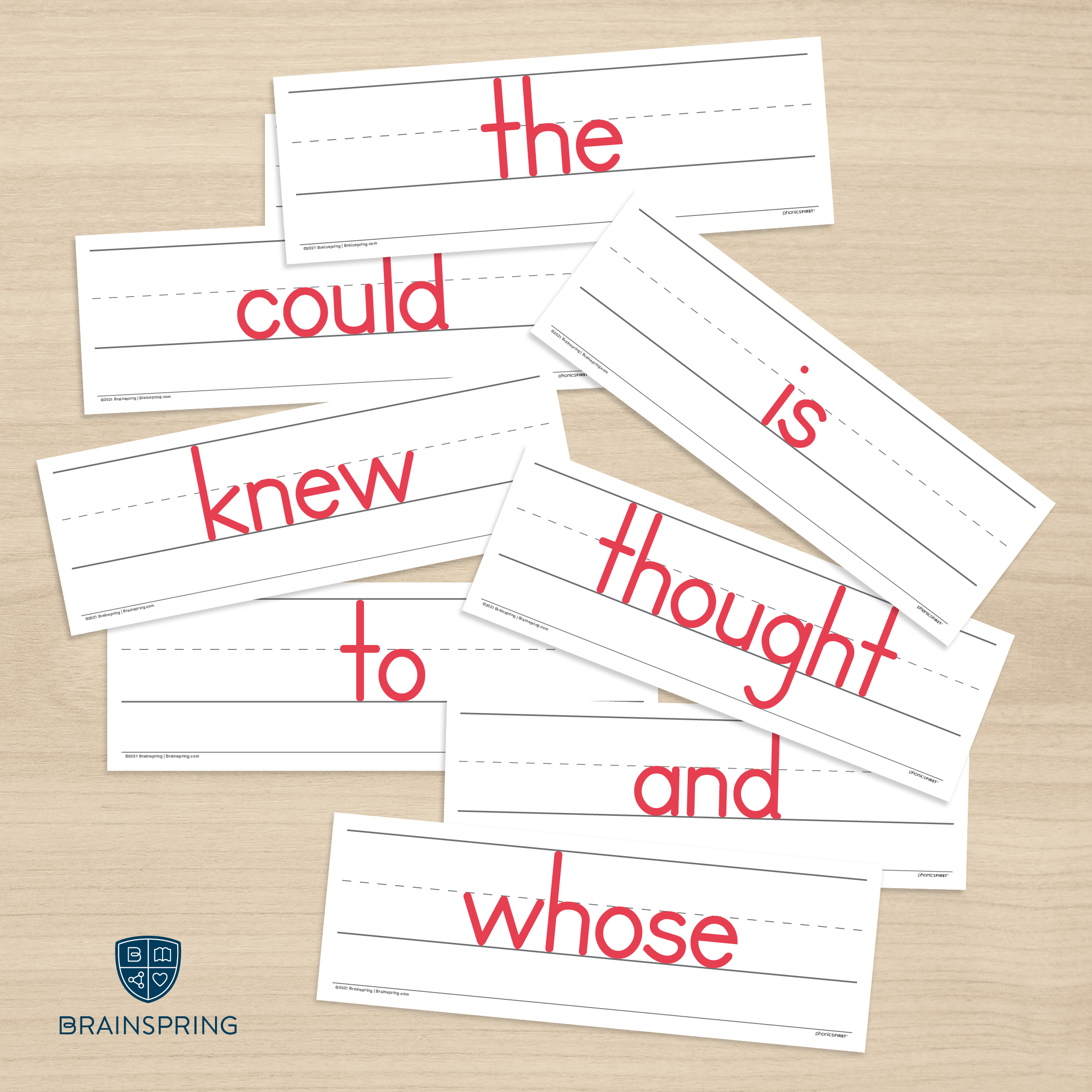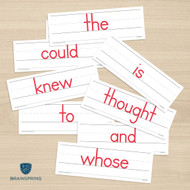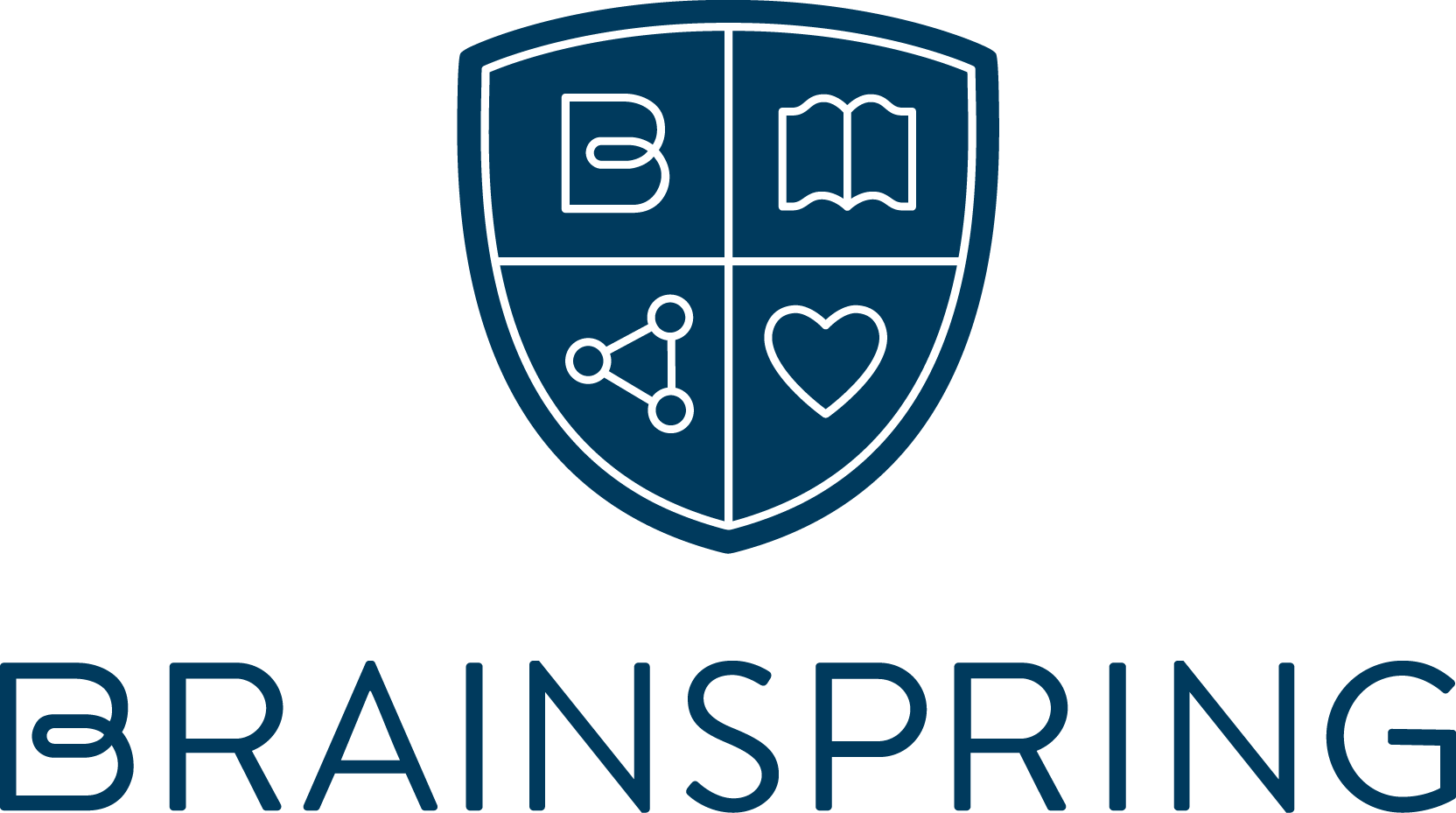The Evolution of Red Words
Posted by Brainspring on 10th Mar 2022
 Red Words in Phonics First© and Structures© are considered irregular words. They are either words that are not phonetic (cannot be fingertapped) or high-frequency words that contain advanced spelling concepts not yet taught. Red Words must be memorized using our 9-step Red Word instruction and retrieved in reading and spelling using the loading and arm-tapping motions. Why do Red Words exist, and why are there so many of them for our young readers?
Red Words in Phonics First© and Structures© are considered irregular words. They are either words that are not phonetic (cannot be fingertapped) or high-frequency words that contain advanced spelling concepts not yet taught. Red Words must be memorized using our 9-step Red Word instruction and retrieved in reading and spelling using the loading and arm-tapping motions. Why do Red Words exist, and why are there so many of them for our young readers?
The underlying reason why many high-frequency, non-phonetic words exist is simply because spelling is much more resilient to change than the spoken language. When you see a word with an odd spelling, it is highly likely pronounced the way it was spelled at some point in history (for example, the gh in night used to be pronounced). Centuries of systematic change in our phonetic structure with very little change in our spelling system has led to the number of Red Words our students need to master.
Because many Red Words are high-frequency words, teachers of early grades often comment that the English language has too many exceptions. Their students need to be taught these Red Words because they are the ones most often used in their oral language. Early reading is about making connections with words they have heard and the words in print. With multiple exposures, students begin to recognize the word as a whole and no longer need to sound out each letter. As we advance through higher levels of English, the words tend to adhere more to the conventional spellings we teach in Phonics First© and Structures©.
Dedicating time to Red Word assessment and instruction will ensure students’ reading and spelling fluency.
Written by Ingrid Hartig
Ingrid is a Master Instructor with Brainspring’s Educator Academy
Brainspring has proudly supported the educational community for more than 25 years.
Our Educator Academy provides educators in grades K-12 with comprehensive MSL Professional Development courses. Learn more about our in-person and online professional development.
The Learning Centers support students through one-on-one, multisensory tutoring sessions. Learn more about our in-person(available in Southeast Michigan) and nationwide online tutoring.

